ОСА эксклюзивный коллекционный нож ручной работы мастера студии Павла Гончаренко, купить в Украине (Сталь К110™ в ламинате из той же к110 61 HRC)
- Производитель: Студія ножів ручної роботи Павла Гончаренка
- Модель: ОСА - ніж ручної роботи майстра Павла Гончаренка
| Общая довжина клинка mm: | 275±05 мм |
| Материал лезвия | Клинок сталь – австрийская высокоуглеродистая к110 Bohler-Uddeholm AG в ламинате из той же к110 через латунь и два слоя никеля. Клинок работы Roma Cherniak |
| Твердость клинка (металл) | Закаленность - твердость центрального слоя 61 HRC |
| Материал ручки: | Гарда и тыльник из карбона, латунь, g10, стабилизированный зуб мамонта, стабилизированный кап клена, мозаичная темлячная трубка и пен. Темляк из кожаного шнура 3мм, бусины из гибрида янтаря |
| Длина лезвия | 140±05 мм |
- Наличие: Есть в наличии
Доступные варианты
Описание
SPECIFICATIONS:
Название ножа - ОСА эксклюзивный коллекционный нож ручной работы мастера студии Павла Гончаренко, купить в Украине (Сталь К110™ в ламинате из той же к110 61 HRC)
Тип ножа: Фиксированный клинок
Бренд: Студия "Ножі ручної работи Павла Гончаренка"
Стальной лист: Цельнолитый, сквозной монтаж на стяжку и смолу
Угол заточки лезвия: Заостренный на 35 градусов
Спуски: Прямые
Введение: 0.2 мм
Твердость лезвия: Твердость центрального слоя 61 HRC
Общая длина: 275 мм
Длина лезвия: 140 мм.
Ширина лезвия: 31 мм
Толщина лезвия: 3.8 мм
Длина рукоятки: 135 мм
Толщина рукоятки: 31 мм.
Шлифование лезвия: Финиш – ручной сатин
Материал болестера: Нержавеющая сталь
Рукоятка: Гарда и тыльник из карбона, латунь, g10, стабилизированный зуб мамонта, стабилизированный кап клена, мозаичная темлячная трубка и пен. Темляк из кожаного шнура 3мм, бусины из гибрида янтаря
Цвет рукоятки: Оса.
Пропитка рукоятки: Есть
Покрытие рукоятки: Есть
Отверстие для шнурка (под темляк): Есть
Ножны: Кап клена тонированный, телячья кожа чепрак. Итальянская натуральная кожа растительного дубления, прошитая вручную вощеной нитью, обработанная апретурой для защиты от воды, пропитана защитными растворами, прошита вощеной нитью. Ручное тиснение фактуры. Подвес съемный, свободный, вставка из гибрида, бусина – янтарь.
Состояние ножа: Новый
Цена: Указана вместе с ножнами.
Модель: ОСА эксклюзивный коллекционный нож ручной работы мастера студии Павла Гончаренко, купить в Украине (Сталь К110™ в ламинате из той же к110 61 HRC)
Номер модели: 103
Страна рождения: Украина
Ремесленник: Мастер Павел Гончаренко, г. Иванков, Украина ("Ножі ручної работи Павла Гончаренка")
Лучшее использование: Охота, рибалка, разделение тушки, нарезка
Нож заточен, не является холодным оружием.
Наши ножи очень острые, поэтому открывайте и используйте очень осторожно. Мы не несем ответственности за какие-либо травмы, связанные с использованием наших ножей.
Наша продукция предназначена для легального использования только ответственными покупателями. Мы не будем продавать наши продукты лицам младше 18 лет.
Наличие регулярно меняется, при подтверждении Вашего заказа мы сообщим о наличии или сроке готовности товара. Изделие может несколько отличаться от представленного на фото.
Сталь к110 для ножей – особенности, плюсы и минусы
В настоящее время существует множество возможных материалов для производства ножей. В зависимости от цели изготовления берется разный материал. Причем содержание основных веществ в различных марках стали может очень существенно отличаться. Наиболее типичными марками стали являются высокоуглеродистые виды стали. Среди них можно обнаружить множество видов материалов, отличающихся между собой по количеству дополнительных элементов. Одной из лучших марок стали для охотничьих ножей К1100 от австрийской компании Böhler.
Состав и особенности
Сталь Böhler К110 представляет собой высокоуглеродистый состав с высоким содержанием хрома. Металл штампуется методом холодной штамповки. Производит металл один из самых крупных металлургических концернов в мире. Заводы расположены в Европе, Северной и Южной Америке.
При производстве К110 используется технология электрошлаковой переплавки. За счет этого существенно увеличивается качество материала. Из-за наличия различных нежелательных примесей могут появиться серьезные дефекты во время механической ковки. Чтобы этого избежать, используется метод электрошлаковой переплавки. При прохождении электрошлаковой переплавки расплав до начала твердения пропускаю через слой специального шлака, с помощью которого из расплавленного металла устраняются посторонние элементы, например фосфор, сера и многое другое.
Методика электрошлаковой переплавки обеспечивает итоговый результат с низкими уровнями сегрегации, чистотой и однородностью структуры. У Böhler К110 существенно снижен процент вредных примесей и соединения металлов и неметаллов с углеродом распространены равномерно.
Поэтому такой металл отличается сложным составом и способна выдерживать даже очень тонкие углы при ковке. Одним из основных преимуществ является очень высокая прочность и вязкость. Закалять такой материал желательно на воздухе. При необходимости применяется методика азотирования. Böhler К100 используется для ковки ножевой продукции среднего и высокого ценового сегмента.
Состав металла:
- В нем содержится 1,5% углерода, обеспечивающего более высокую прочность и жесткость.
- Содержание хрома – 12%. Этот металл обеспечивает повышенную способность стали закаляться, устойчивость к ржаванию и износу.
- Молибден 0,8% применяется для изготовления быстрорежущей стали. Он значительно повышает жесткость клинка, делает его устойчивым к высоким температурам.
- Процентная доля ванадия – 1%. Этот химический элемент обладает высокой прочностью. Усиливает характеристики упругости материала и делает его невосприимчивым к разным агрессивным средам.
- Марганец – 0,35%. Марганец используется при выплавке. Он значительно повышает жесткость материала. Характерной особенностью марганца является то, что из стали с высоким содержанием химического элемента изготавливают различные предметы, требующие высокой прочности. Например, сейфы, рельсы и многое другое.
- Böhler К110
Основные преимущества
Любая сталь является сплавом железа и углерода, однако их соотношение в веществе будет оказывать непосредственное влияние на характеристики готового изделия. Этот вид материала изготовляют путем электрошлаковой переплавки. А за счет большого содержания примесей появляется завышенная крепкость материала.
К основным преимуществам стали К110 от Böhler можно отнести:
Главным требованием, которое касается всех ножей, это острота заточки. Однако чем острее заточить нож, тем быстрее он будет тупиться. Однако к ножам из К110 это правило не применяется. Из-за высокой концентрации хрома в этой стали существенно повышается стойкость к износу. Поэтому режущая кромка всегда будет острой. Однако использование таких примесей снижает стойкость к коррозии. Хотя нож и не будет слишком быстро ржаветь.
Наличие высокого процента молибдена в составе обеспечивает материал равномерностью и гомогенностью стали. Это очень важно для ножа. Небольшая часть ванадия повышает прочность и долговечность материала, а марганец в контакте с хромом значительно повышает прочность.
После множества испытаний было установлено, что даже после множества обработок костей и разреза консервных банок на лезвии практически не появляется засечек. Лезвие продолжает быть способным нарезать газету под собственным весом.
За счет сочетания разных примесей в составе вещества и метода изготовления стали ножи из этого материала отличаются крайне продолжительным сроком эксплуатации.
Повышенная устойчивость лезвия к разным агрессивным средам, к которым относятся некоторые внутренние органы животных. Поэтому нож не будет продолжительное время темнеть и ржаветь.
Основные недостатки
К минусам можно отнести:
Такая не отличается высокой прочностью на излом. Поэтому нежелательно метать изделия, проверять на способность изгибаться.
Клинки из подобного материала обычно производятся с небольшим размером и узкой направленностью. Это охотничьи ножи, специально подготовленные для отделки туш. Обычно они используются жителями Сибири и Севера. Однако свои отличные свойства нож будет способен показать исключительно при грамотной подготовке и заточке. В противном случае очень легко испортить режущую кромку. Однако, если такой уход будет обеспечен, ножи из К110 будут равны с а характеристиками лезвий из более качественной стали.
Вывод
K110 from Böhler from the Austrian manufacturer is one of the highest quality products for forging knives. Despite the demanding care of the blade and the mandatory condition, it must be thoroughly dried after contact with water, a knife made of such metal will serve for a very long time in the right hands. Therefore, it is definitely worth buying K110 knives and tools from the Austrian manufacturer. They can last a long time.
*You should remember that if you use the knife for its intended purpose and with careful handling, it will serve you for a very, very long time.
Well, you can buy a Damascus steel knife on the portal https://knife.net.ua/ on our website or by contacting us by phone +380961711010.
Happy shopping! We will be glad to see you among our customers!
Suvel ash. Stabilization of wood
Suvel ash. Stabilization of wood is a method of processing, as a result of which wood is given higher strength and its decorative qualities are improved, while preserving the natural pattern. That is, Stabilized wood combines the advantages of synthetic materials with natural beauty. In the course of stabilization, the wooden blank seeps through, forming a polymer monolith that securely binds the wooden components and minimizes harmful factors affecting the human body (with a list of harmful factors encountered during the manufacture and operation of wooden products, you can get acquainted HERE). Stabilized wood has excellent mechanical properties during processing - there are no differences in density along the body of the workpiece (which allows more accurate drilling and sawing), it is polished without clogging the skin, it is polished to a mirror. At the same time, the appearance and tactile sensations remain inherent to ordinary wood.
In addition to the intricate pattern on the surface of the product, stabilized wood provides a number of undeniable advantages over traditional materials:
• High density;
• Hardness;
• Resistance to changes in temperature and humidity of the environment;
• Immunity to ultraviolet radiation;
• Ability to withstand short-term heating by an open flame, without losing its quality characteristics and without being deformed;
• Impermeable to various liquids, including oils;
• Resistance to solvents of organic origin;
• Excellent decorative properties – stabilized wood lends itself well to manual and mechanical processing (does not clog sandpaper).
Kap and souvel are growths on the trunks of trees in the form of characteristic rounded swellings. Getting such a blank is a dream for everyone who works with wood, and here's why. The fibers in such growths have a special deformed structure: their tortuous and disordered growth creates a unique texture called swill. But this is not the flexibility characteristic of, for example, maple. It is very tangled in growth and has a number of features, thanks to which an incomparable wooden texture is obtained. With its pattern and characteristic ebb, it resembles marble, mother-of-pearl or moire pattern. Such material is a real treasure for everyone who works with wood.
Cap and souvel are similar in nature, but they are not the same. They differ in structure, textured pattern, features of formation and a number of other points that we have collected in this table.
Now about all this in more detail.
1
cap
People call the cap a "witch's broom". It really has something repulsive, but only if you don't know what miracle nature has hidden under a thick layer of bark.
What does Capt
Location of the tree
Unlike the souvel, kapa are rare. They usually appear on the trunks of trees or in the basal part. They are much less often formed on branches. Basal growths (caproot) have a flattened shape, while trunk or bud growths are more like a ball, often asymmetrical in appearance. As a rule, mouthpieces are located on one side of the trunk as a characteristic influx; growths that cover the tree all the way around are less common. There are both single specimens and whole cap colonies covering the trunk of the tree in small groups.
Formation and structure
The fundamental difference between a cap and a souvel is in structure. If you look at the cap in section, it will be filled with small wooden knots - these are called kidneys. Whereas souvel is simply deformed and chaotically intertwined annual rings. Thus, the cap growth represents a kind of reserve bundle of kidneys that have not opened, created by nature as a reserve. Why? Dendrologists do not agree on this.
Under a thick layer of bark, cap and souvel practically do not differ from each other. The only thing that can give off a cap is small green twigs growing on its surface. This is a part of the same sleeping kidneys that have only been activated for some reason. Without the bark, the difference between cap and souvel becomes obvious. The surface of the cap is covered with cone-shaped convexities, while the souvel is completely smooth.
The sizes
of the drops vary greatly: from growths of walnuts to truly gigantic formations. The largest of the documented kapa on the territory of the former USSR was found on the bank of a flat-leaved tree that grew on Sakhalin. Its height was 1.4 m, and the length of the circle was 10.8 m. The size of the tips depend on the location on the trunk and the type of tree. The largest are traditionally considered the basal kapa, but their extraction turns into a difficult task and is impossible without cutting down the tree. Large mouths, weighing 300 kg or more, can often be found on walnut, downy river, Mongolian oak. They grow 3-4 times slower than the souvel and are very rare.
Texture
Kapova wood has a characteristic texture, thanks to which it is quite easy to distinguish it from suvel. On the cut, the dormant buds seem to be wrapped in numerous layers of wood fibers. Such nodules are somewhat similar to the "bird's eye" texture, but they are not so evenly distributed in the cap. Here everything is chaotic: the kidneys merge with each other, penetrate into each other, are absent in some areas, and in others they accumulate very densely. All this creates complex lacy abstractions that somehow resemble a malachite pattern.
Bird's eye (maple sapwood) and cap texture
The more dormant buds, the more complex and rich the pattern of the wood. In large kapa there are fewer kidneys, so their texture is closer to suvels.
The biological role of mouth sores
Both mouth sores and souvel are often called a disease. Such a position is not completely scientific, but it cannot be called unequivocally wrong either, at least because the biological role of growths is still not understood. There are different hypotheses about this. For example, the cap is considered as a reserve supply of kidneys from which the tree can regenerate, for example, in case of drought or partial loss of the crown. There is also an opinion that the growths increase the mechanical strength of the trunk, protect it from damage or prevent disease-causing agents from getting inside. There are many assumptions, and all of them are convincing to varying degrees. However, most dendrologists agree that the ability of trees to form crowns has no clear function — it is a kind of side effect of evolution that was once more important than it is now.
2
Suvel
Suvel is growths without dormant buds. Sometimes such formations are called "suvelval" or simply "svil". Unlike the kapa, the structure of the souvel has no wooden knots, and all the beauty of the texture here is created by chaotically intertwined vessels. From such deformed fibers, an influx in the form of a ball or a drop is formed on the barrel. It grows three to four times faster than kapa and is found on trees much more often.
What does the souvel look like?
It is quite easy to distinguish a souvel from a cap. Neither small twigs nor buds break through it. Under a thick layer of bark, the surface is completely smooth without conical bulges, like a cap. All the beauty of the texture here is formed by the chaotic release of interwoven fibers. It does not just go in light waves, as in some species of trees, but is lost in dense folds, bundles, bundles. All the beauty of the pattern is enhanced by a special ebb that resembles marble, mother-of-pearl or a moiré pattern. There are no such pronounced overflows in the cap.
Suvel changes its appearance more strongly after decoration. For example, with deep impregnation with colorless oils and careful polishing, the wood acquires a special "bone" texture. Because of this, souvel is sometimes even called a wooden bone. In some rocks, after processing, the veins are literally visible through the structure of the material. This effect is highly appreciated by knife makers: most often they make knife handles from birch, walnut, and ash sapwood.
The density of the souvel is lower than that of the cap. In this, it significantly exceeds the hardness of the trunk wood. Processing birch sapwood and other species requires certain skills, since, like sapwood, it is not the most pliable material. But despite all the difficulties, working with him is an incomparable pleasure. Souvel is always a mystery: it is impossible to predict what amazing beauty the drawing will reveal after another pass of the cutter.
3
Where to find valuable growths
Kapas and souvelis are found on all species, but deciduous trees are more prone to their formation. In our latitudes, such growths are most often found on the shore, and of all its types. Maple, rowan, walnut, ash, hornbeam, oak, elm are also considered to be prone to cap formation. But, let's repeat, this does not mean that they do not occur on other deciduous trees.
In conifers, the ability to form growths is much lower. They are more likely to be found on European spruce, Siberian larch and some other conifers. Pine sapwood is inferior in beauty to growths of deciduous trees, but the troubles with harvesting and processing are much greater here, due to the high content of resins and the tendency to crack.
It is better to go in search of capes from April to May. First of all, at this time the forest has not yet been covered with greenery and the growths are clearly visible. Secondly, it is during this period that the active movement of sap begins in the trees, thanks to which the bark is removed from the sawed growth much more easily. This is relevant, first of all, for caps, which, as we have already found out, are characterized by conical bulges, which make it difficult to remove the powerful bark.
But harvesting caps in the spring involves some difficulties. First of all, at this time, the wood is highly saturated with moisture and it is more difficult to saw it. Secondly, kap or souvel with excessive moisture can present many "surprises" during the drying process: from strong mold to complex through cracks that will hopelessly spoil the valuable material. For this reason, many craftsmen prefer to go in search of saplings in September-October, when the intensity of the movement of sap in the trees decreases.
Kapas and suvels are more often found in deciduous forests. Moreover, foresters note a certain regularity: it is more possible to find tree growths in areas with sparse undergrowth, and especially those that are flooded in early spring.
For those who are serious, it is better to get to know the foresters and agree on the supply of material. The following should be understood here. By the standards of industrial woodworking, capa and suveli are considered a marriage. They are not made into imitations, and not all enterprises have a line for the production of, for example, the same veneer. Also, caps are not used as firewood - they are not malleable in processing and smolder more than they burn. Of course, most likely the forester understands what he is dealing with. But if a person does not engage in carving or sharpening himself, he is unlikely to prepare and store large workpieces. As a result, in the course of logging, kapa and suveli often receive a share of ordinary waste, so it is usually not difficult to agree on the supply on mutually beneficial terms.
Another working scheme is the search for growths in the waste of sanitary logging. Crowning trees in yards, parks, along roads is a systematic procedure in most large cities. This can be used. Moreover, it is often much easier to get along with utility workers than with the same foresters. After inspecting the waste and finding a valuable growth, most likely you will have no problems agreeing to have it sawed off right on the spot.
4
Provision
Everything is relatively simple with growths on fallen trees: they are cut down together with a section of the trunk, and already the houses in a calm environment decide what the blanks will be used for and how to more rationally cut a massive log. But finding a fallen tree with valuable growth is like winning the lottery.
Much more often, you have to saw off the sap and saplings from a growing tree. Doing it with a chainsaw is a very barbaric method. And walking through the forest with such an accessory can cause a lot of misunderstandings during a meeting with a forester.
How to cut souvel and cap?
The most delicate and at the same time effective method is the use of a bow saw. Separately, we note the importance of a high-quality canvas with the correct separation of the teeth. Otherwise, the saw will wedge and bind in the "cap wood", which will turn the already difficult sawing on a scale into this test.
The second tool, which will not be superfluous, is a small ax: they carefully chop the bark around the growth. On thick trunks, it is better to saw strictly tangentially. This reduces the useful size of the workpiece, but avoids hopeless jamming of the blade during the sawing process. On relatively thin trees, the cutting line can be slightly deepened towards the trunk. Of course, it is better to lay an arc within reasonable limits, especially if you did take up the chainsaw.
Seven sweats went down, and the desired cap was finally sawed off. Now the most important thing! It is necessary to close the wound on the tree to prevent it from dying. For smearing, it is often recommended to use garden var or ordinary clay. These are working methods, but not reliable enough (especially clay). It is better to cover the burning place with oil paint.
5
How to dry a cap without cracks. Two ways
Those who work with coppice wood know very well that the most difficult thing when working with this material is not to find or even cut the desired growth, but to dry it properly. So that the workpiece does not turn out to be hopelessly spoiled by mold, warping or through cracks.
Just in case, we remind you: you can work with wood only when it is dry. The moisture content of the workpiece should reach at least 15%, even better — 10-12%. This is important for any type of processing: turning, carving, carpentry. Raw wood is poorly processed and is almost guaranteed to present "surprises" in the form of cracking, warping and even mold. In general, the tree needs to be dried, and the sapwood is no exception.
It is not difficult to guess that due to the abnormal structure of the fibers, drying of wood growth is significantly different from ordinary lumber. The internal tension here is much stronger, and the nature of their manifestation is completely unpredictable. Due to this, the workpieces often have deep cracks, or even completely split into parts.
Let's say right away that there is no 100% working scheme that will help avoid the unpleasant consequences of drying. Every drop or drop is unpredictable. Plus, a lot depends on the size of the growth, the type of tree, and the time of sawing. Nevertheless, we will focus on the two most effective ways to dry birch and any other sapwood without cracks.
Seasoning
Here we are talking about standard atmospheric drying, but with its own minor features. The general algorithm of actions is approximately as follows.
- The place of the cut (the back side of the cap or souvel) is covered with an improvised sealant. It can be oil paint or, for example, PVA glue. This is necessary in order to slow down the accelerated exit of moisture through the end. Rapid drying leads to a sharp imbalance of internal stress and increases the risk of cracks. Thus, in the case of atmospheric drying, time is sacrificed in favor of wood stability.
- The place where the workpiece dries must be well ventilated. At the same time, it is necessary to provide protection from direct sunlight and moisture. Plus there should be no moisture. From spring to autumn, it is easiest to ensure such conditions outside by making an improvised drying rack with protective flooring. This is especially true if there are many blanks.
- It is better to put two square spacer rails under each workpiece so that air currents can blow it from all sides. But for the winter period, it is still better to move kapa and suveli indoors.
Atmospheric drying is a slow process. And this is its main drawback. It takes about a year for a medium-sized harvest to dry to 15-17%. At the same time, during the entire drying period, it is necessary to carefully monitor that no centers of biological activity appear on the wood. Preventing this problem helps with timely antisepsis, which we talked about in detail in a separate article. But after such processing, for obvious reasons, it is better not to use caps for making spoons, dishes, boards and other dishes.
Accelerated drying
Here we came to the question, why cook souvel. Boiling in a salt solution is one of the methods that helps to quickly remove moisture from a wooden workpiece, minimizing the likelihood of its cracking. That is, it is a kind of stabilization technology. Now about how to cook cap and souvel. But let's start a little further. Back in 2005, a user of one of the weapons forums under the nickname Serjant shared his method of accelerated drying of the souvelle. The method itself turned out to be so successful that it is still being retold all over the Internet in various variations, and the old-timers call it "drying by the Sergeant's method." Let us summarize its essence as briefly as possible:
- The entire workpiece is placed in a container and filled with water so that it covers the wood by 2-3 cm. It is desirable to first clean the growth from the bark for better penetration of the salt solution.
- Salt is added to the water at the rate of 2 tablespoons (with a slide) per liter.
- In the classic version, the author also suggests adding sawdust of resinous species to the water. This can not be done. Decoction with sawdust really gives the workpiece a pleasant ocher shade, but only on top. Inside, the texture remains normal.
- The container is put on fire and boiled over low heat for 6-8 hours , periodically adding water and adding salt.
- After cooking, the workpiece is dried for one or two days. No need to use any newspaper wrappers. Follow the standard atmospheric drying rules mentioned above: use spacer bars, hide the workpiece from the sun, ensure natural ventilation.
- The cooking-drying cycle is repeated 2-4 times , depending on the size of the workpiece. Total cooking should take at least 12 hours.
- After the last cooking, the workpiece is dried for one to two weeks.
It cannot be said that this method is already fast. And it requires a lot of trouble. But such stabilization is not a year and a half of atmospheric drying. Also, with cooking, you can worry less about cracks. Salt effectively displaces not only free, but also bound moisture, which is in the cells of the tree. In this way, deep, fast and, most importantly, uniform drying of the workpiece is ensured. The wood is stabilized with minimal internal stress imbalance, so the risk of cracking is significantly lower.
6
Why do you need a birch cap and souvel. Processing features
Carving on the souvel and kapu is very different from working with ordinary wood. This requires special skills and understanding of this non-standard material. The usual Bogorod knife or carving knife will not help much. The high density and chaotic arrangement of the fibers make it difficult to handle with hand tools. Even sharp chisels fit in front of this material. Therefore, the processing of wooden growths is more often carried out today with the use of an electric tool. Processing of small details in products and other decorative products is done with a dremel, with various crowns, small discs, burrs.
What can be done with kapa and souveli
Wood growths are widely used in decorative and applied arts. There is even a separate direction of artistic craft - root plastic surgery. Elegant boxes, cigarette cases, jewelry, and much more are made from kapa and souvel. The same kapokorin is usually considered the best material for making smoking pipes.
In industrial woodworking, mouthpieces are mainly used for veneer production. Furniture is also inlaid with them: headboards, tables, sideboards and other items. Gunsmiths especially appreciate this material: cap and souvel are the best material for knife covers and gun stocks.
The hotel direction of cap finishing is the creation of tableware and turning products. Turning in a special way reveals the beauty of the already unique structure of this material.
Bowls, plates, dishes and other turned products look like full-fledged works of art, the designer of which was nature, and the sculptor - man.
Traditional dishes are also made from wooden growths. For example, the famous stump - the Finnish bowl, which accompanies the inhabitants of the north all their lives and is a kind of amulet - is cut from the cap of a birch tree.
Cutting boards deserve a special mention: they are so unique in their beauty that while they are not used as utensils, they serve as self-sufficient designer decor.
Source: https://woodschool.com.ua/kap-i-suvel.html
МАТЕРИАЛ РУКОЯТИ ЗУБ МАМОНТА
Зуб мамонта – это редчайшее сырье, применяемое для изготовления декоративных предметов, например, рукоятей ножей, накладок на рукоятки пистолетов, ювелирных украшений. Это уникальный природный элемент, добыть который удается нечасто, поэтому его стоимость достаточно высокая.

Сегодня зуб мамонта после определенной обработки (стабилизации) широко применяется мастерами кнайфмейкерами. Стабилизация – это процесс полимеризации материала под вакуумом с использованием жирорастворимых красителей или без них, при этом материал пропитывается полимерными веществами насквозь.
МАТЕРИАЛ РУКОЯТИ ЗУБ МАМОНТА
Зуб мамонта – поделочный материал животного происхождения. Его исключительной особенностью является тот факт, что его источником служат вымершие звери – мамонты. Палеонтологами было установлено, что они жили на Земле около 10 тысячелетий назад, и количество их было весьма велико. Зубы у мамонтов были не постоянными, и менялись примерно четыре раза в течение жизни. Выпавшие зубы, которые современные ученые находят во время раскопок, и становятся основой для декоративных элементов, среди которых есть и рукояти ножей.
Из-за длительного нахождения в почве материал приобрел весьма нестабильную структуру – эмаль получила каменную твердость, а дентин, напротив, стал рыхлым. Но современные технологии стабилизации материалов помогли превратить зубы мамонта в превосходную основу для создания роскошных рукоятей ножей. Полимерный композит обеспечивает изделиям устойчивость к коррозии и влаге, а природная основа дает уникальную текстуру и затейливый узор.
3%C2%A0%E2%80%94%20%D1%81%D0%B5%D1%80%D0%B5%D0%B4%D0%BD%D1%94.jpg)
Особенности материала
Для создания разнообразных изделий применяют коренные зубы мамонта. Внешне они похожи на зубы слона, однако намного больше, имеют другой оттенок. С учетом исторической ценности и редкости бивень мамонта ценится особенно высоко, так как это животное вымерло задолго до нашей эры. Бивни доисторических гигантов можно встретить не только в палеонтологических музеях, но и на прилавках ювелирных магазинов, их применяют для украшения интерьера, используют для создания разнообразных декоративных элементов – разумеется, не в первозданном виде, а в обработанном.
Возраст материала, согласно данным ученых, составляет 10-40 тысяч лет. Как жили мамонты, на сегодняшний день изучено не до конца. Однако найденные учеными останки этих гигантов, их кости, зубы, даже целые туши позволили ученым серьезно продвинуться в этой области исследований. Имеющиеся данные позволили узнать, какой был у млекопитающих внешний вид, чем они питались, в каких климатических условиях жили, какие имели особенности поведения (например, вели они стадное или одиночное существование).
Мамонт питался практически тем же, чем и современный слон: его рацион составляла растительная пища. В современном мире животное могло бы питаться хвойными растениями. Они предпочитали грубый корм, который без труда пережевывали своими сильными челюстями и зубами, похожими на большие пластины. Интересной особенностью организма мамонта было то, что по мере износа старого зуба вырастал новый, который смещал прежний и занимал его место. Таким образом животное могло сменить зубы несколько раз за жизнь. Полностью все зубы менялись примерно в десятилетний промежуток, а средняя продолжительность жизни мамонта была 40 лет. Иначе говоря, одно животное могло пережить в среднем четыре полных смены коренных зубов. Именно благодаря этой особенности люди часто находят отдельные изношенные зубы мамонта, но не встречают других его следов. Это просто когда-то потерянный выпавший зуб, сумевший сохраниться до наших дней.
Внешний вид
Если рассмотреть зуб мамонта, можно увидеть неоднородную поверхность с ребристыми краями. Кость, эмаль и мягкая ткань в данном случае чередуются. Материал имеет достаточно сложную структуру:
Основой его служит дентин.
Слой дентина покрыт защитной эмалью.
Стоит отметить, что у мамонта было всего 4 коренных зуба и 2 бивня, которые выступали наружу и служили в основном для самообороны.
После специальной обработки коренной зуб можно использовать для изготовления разнообразных украшений изделий. Плотность материала весьма высокая и напоминает камень. Для того чтобы обработать такое изделие, мастеру потребуется затратить достаточно много сил и времени.
Стабилизация сырья
Чтобы зуб и бивень в процессе использования и изготовления из него изделия не разрушился, применяют технологию стабилизации. Это ответственный этап обработки, при котором применяются следующие технологии:
Поликонденсация.
Вакуумная обработка.
Нанесение специальных красителей.
Все пустоты зуба наполняются полимерным веществом, за счет которого основа приобретает надежную защиту от климатических воздействий. Такое изделие не деформируется, на нем не появляются трещины, оно становится способным выдерживать высокие температуры. Внешний вид материала также изменяется, становится более привлекательным и неповторимым.
До появления этой технологии зубы и кости мамонта для изготовления сувениров использовались редко, так как не обладали достаточной прочностью из-за большого количества трещин и расслоений внутри. Кроме этого, высокую твердость имеет зубная эмаль, которая при обработке быстро приводит в негодность пилы. Стабилизированное же изделие намного проще подвергать последующей обработке. Зуб мамонта стал особенно популярен при изготовлении рукоятей ножей. Он выглядит необычно, привлекательно, а ели добавить краситель, можно создать уникальный узор, способный придать даже такой редкой вещи особенную индивидуальность.
Рекомендуемые товары
Доставка и оплата
Доставка Новой Почтой
Скорость доставки в любое отделение Новой почты в Украине фиксируется оператором, но обычно не превышает 1-3 календарных дней.
Наличными
Оплата наличными при получении товара.
Наложенным платежом на Новой Почте (при себе необходимо иметь паспорт или водительское удостоверение).
Visa и MasterCard
Оплата заказа на карту Приват Банка.
Доставка товара возможна только после подтверждения платежа.














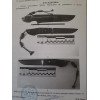






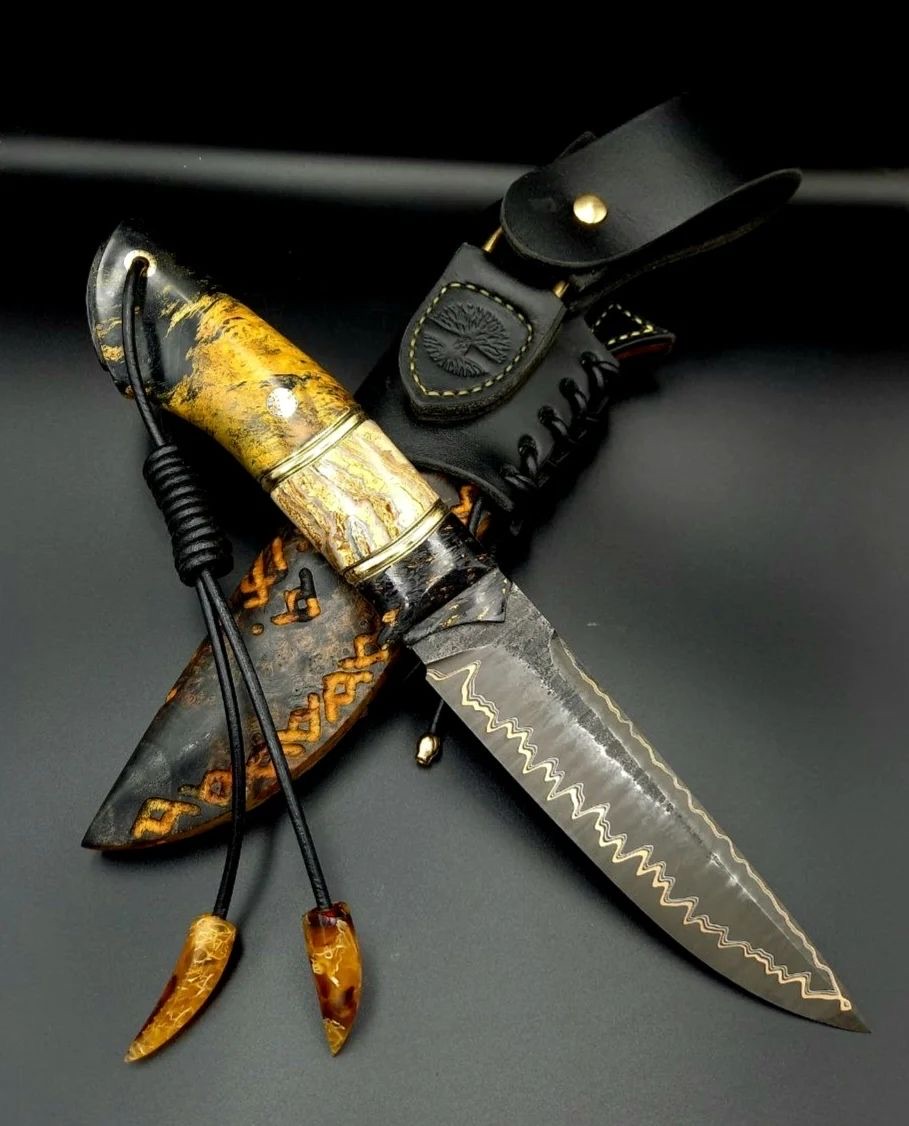

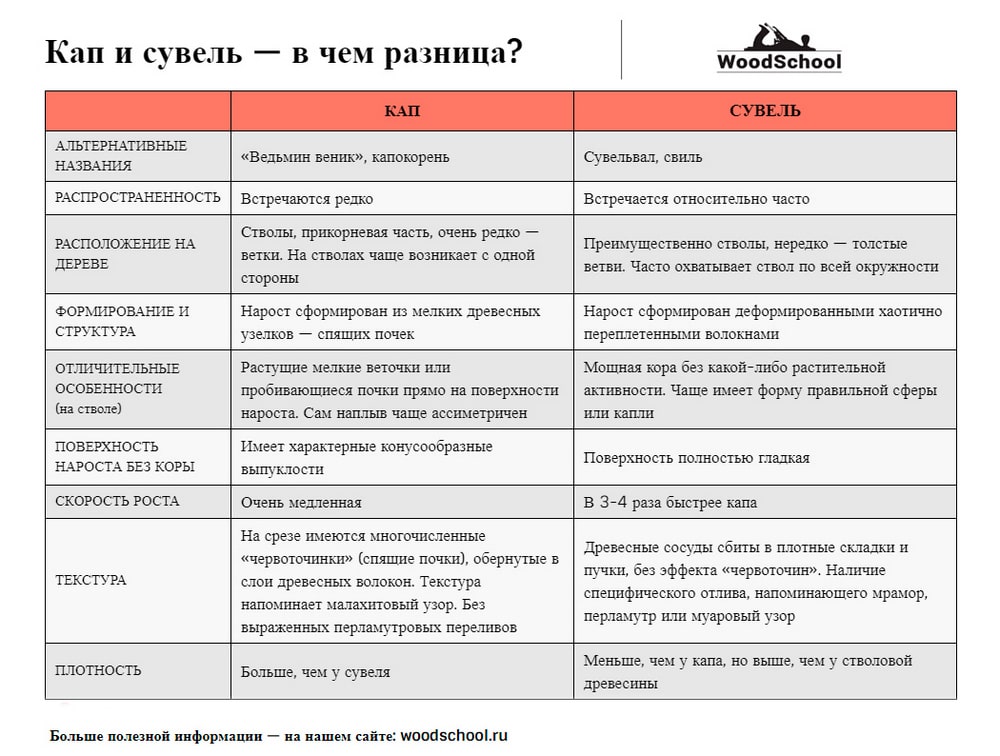
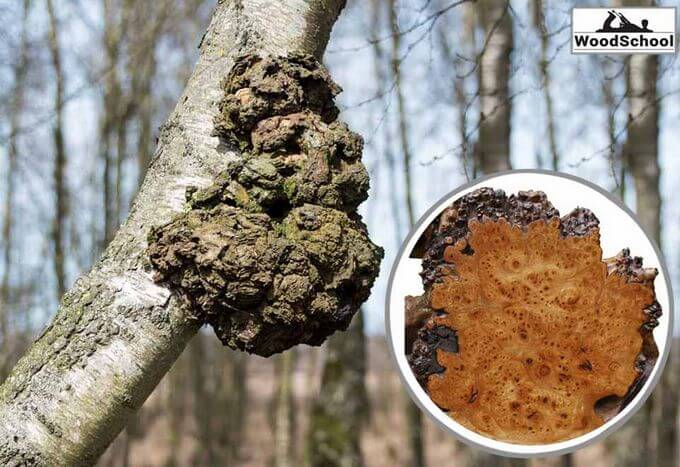
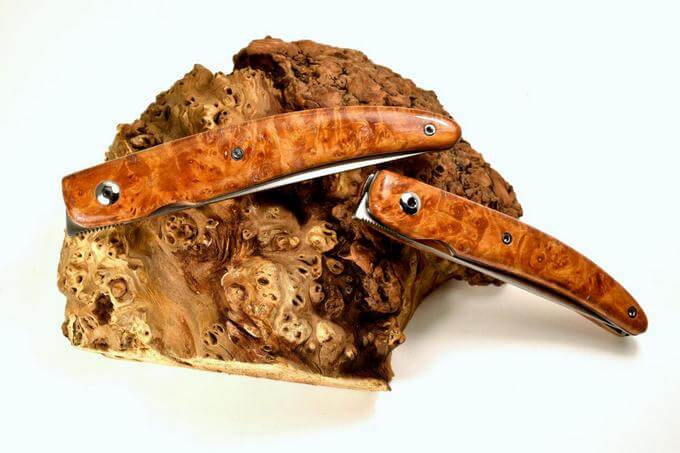
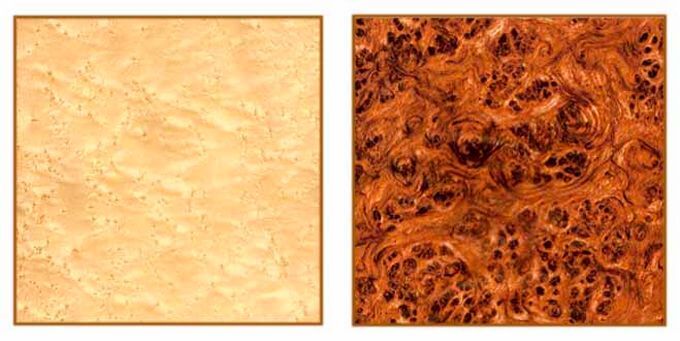
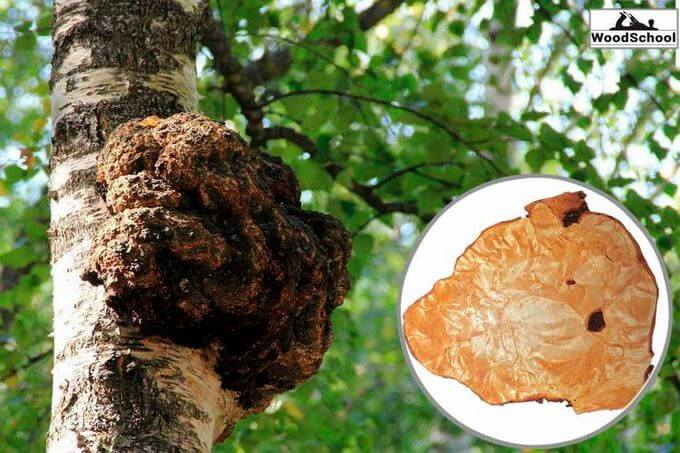
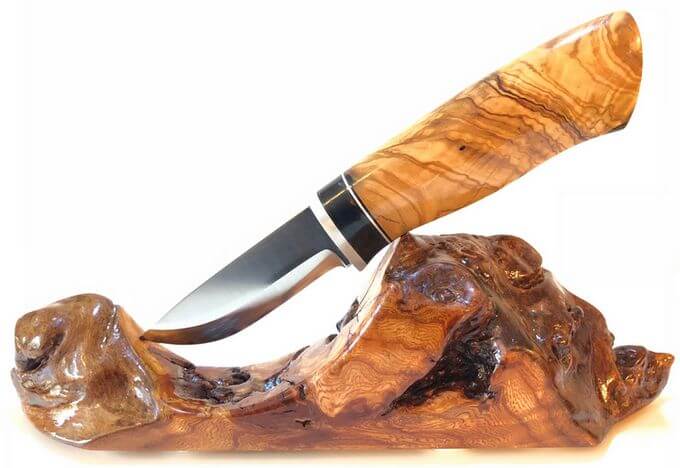
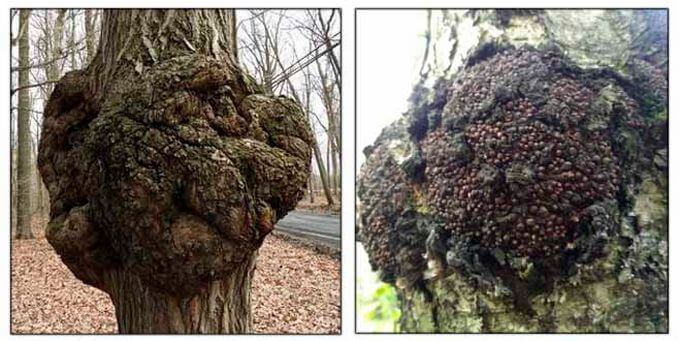
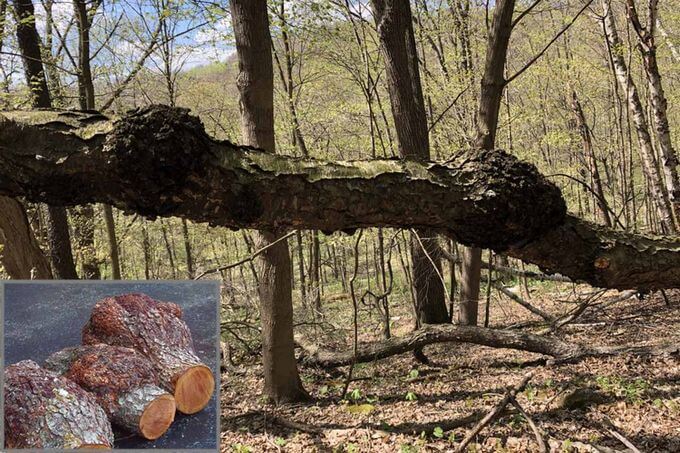
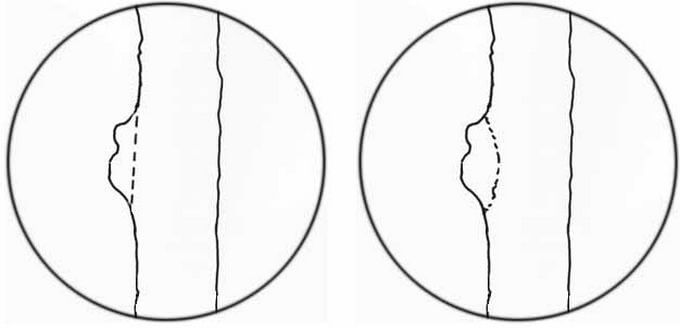
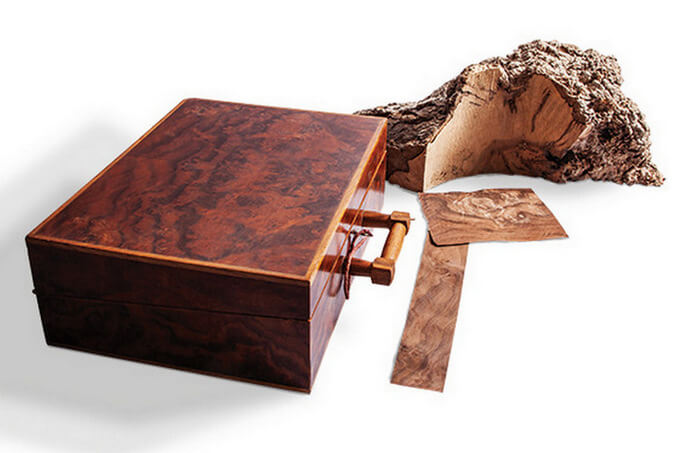
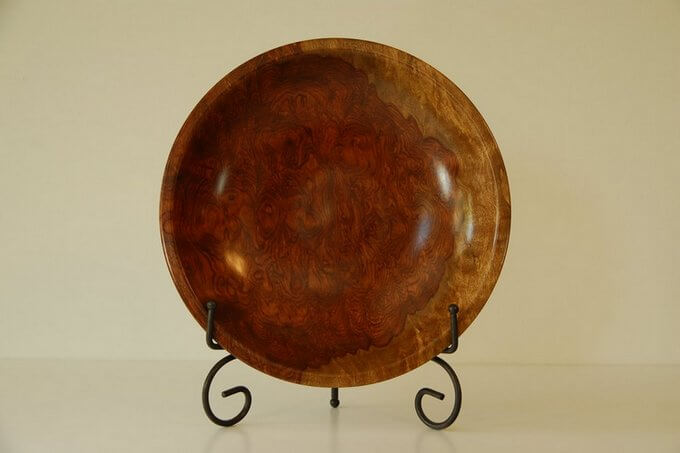
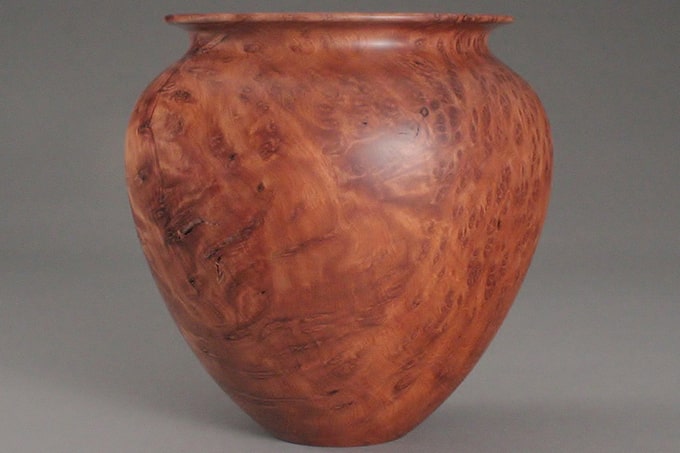
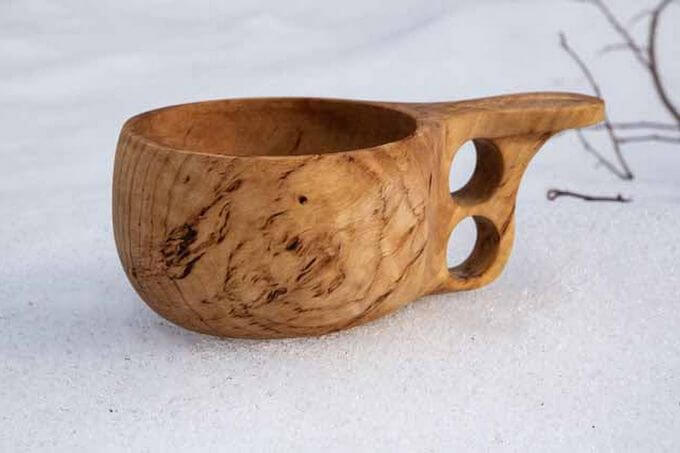
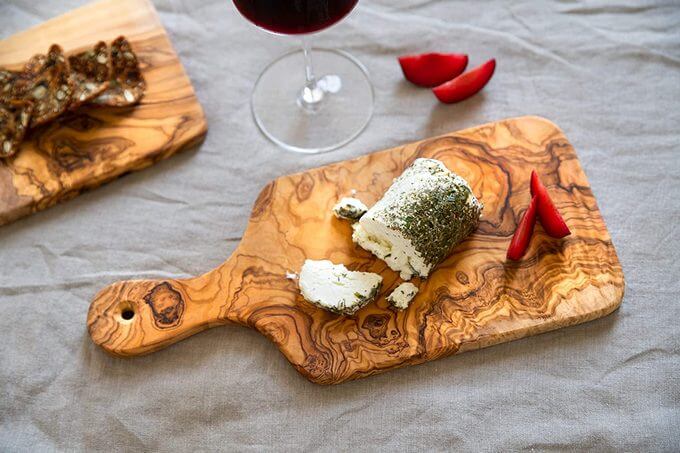
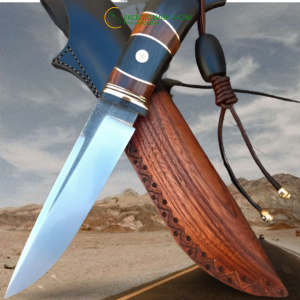
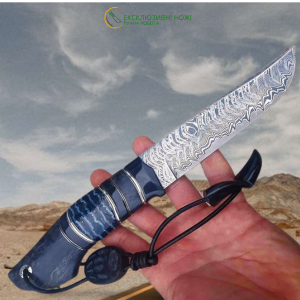
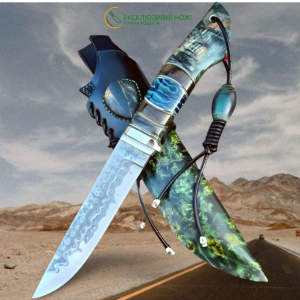
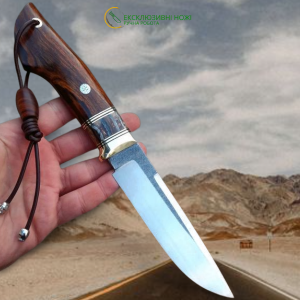
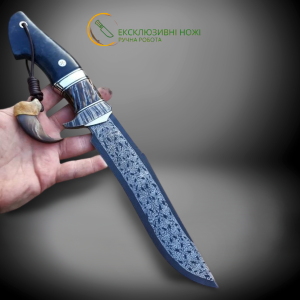
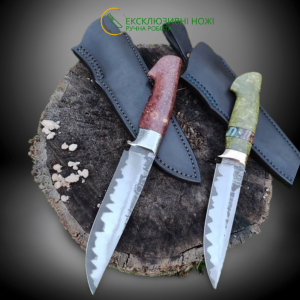
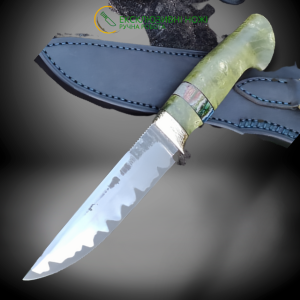
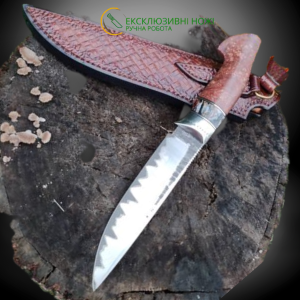
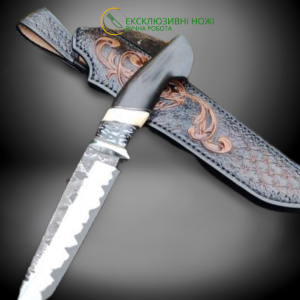
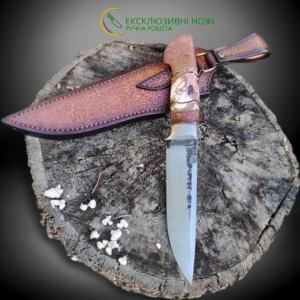
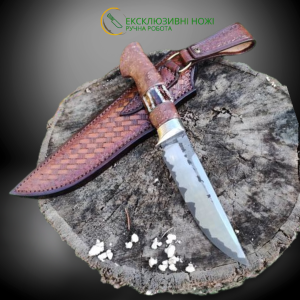
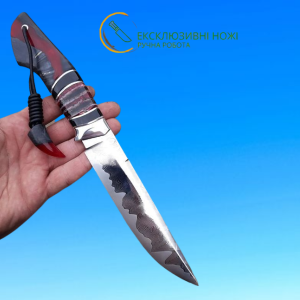

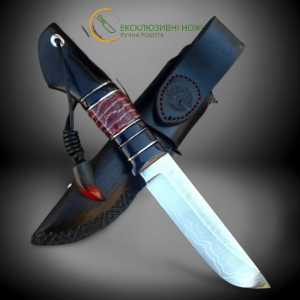
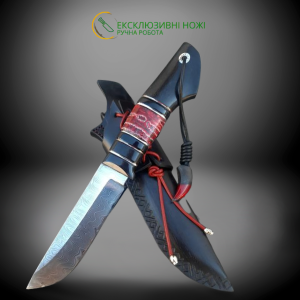
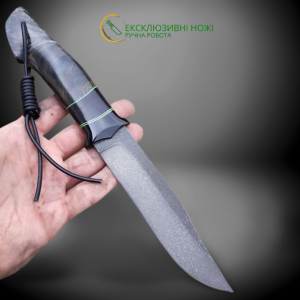
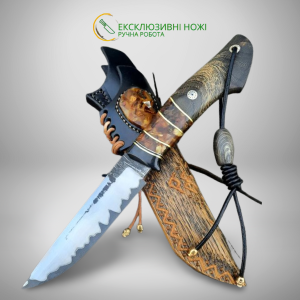
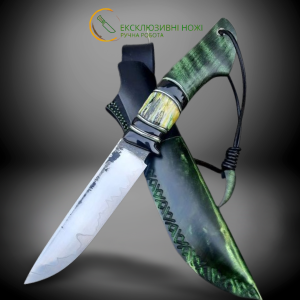
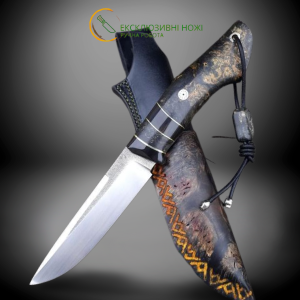

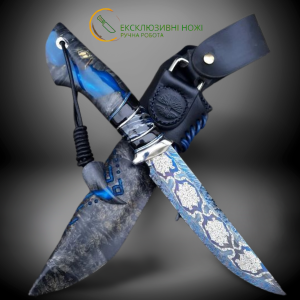
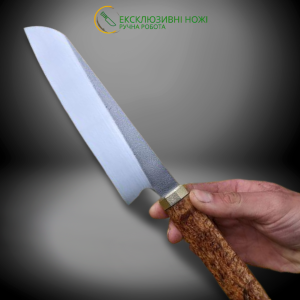
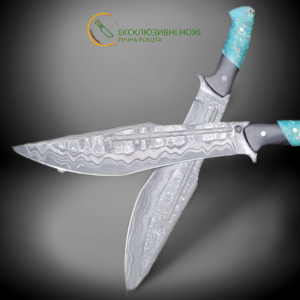
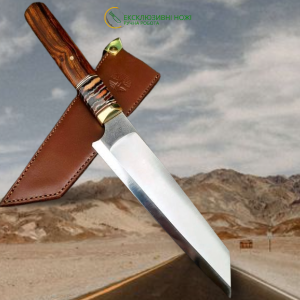
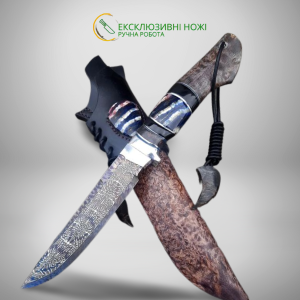
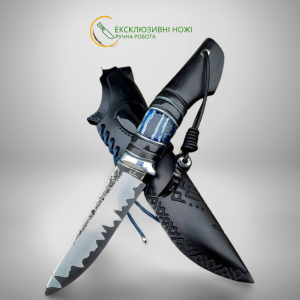
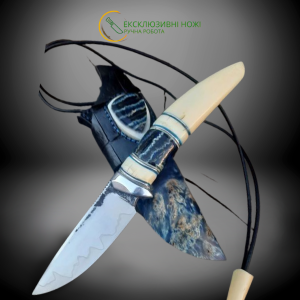
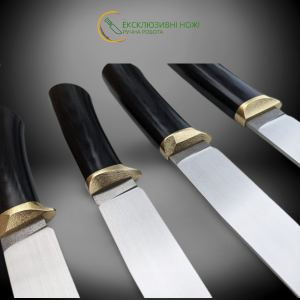
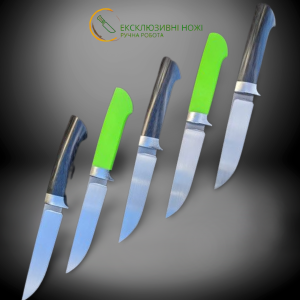
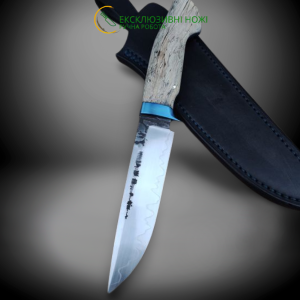
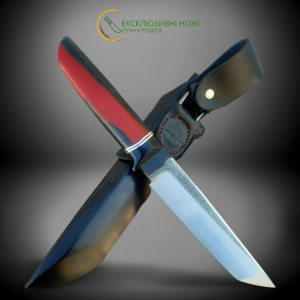
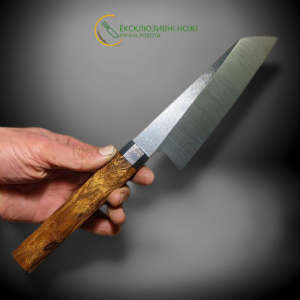
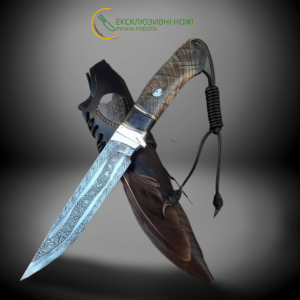
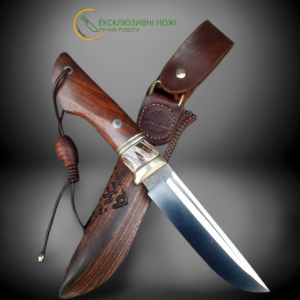
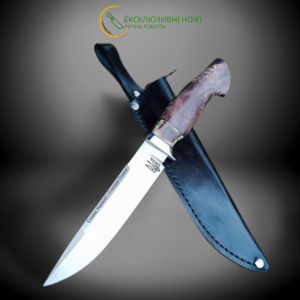

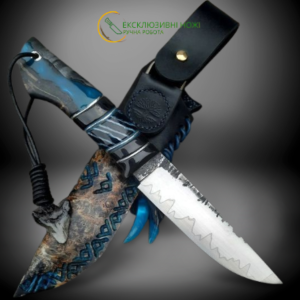
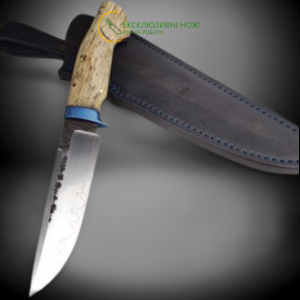
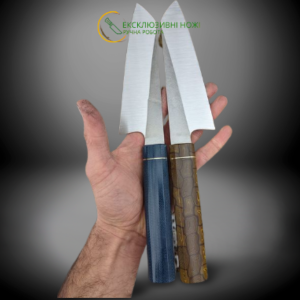
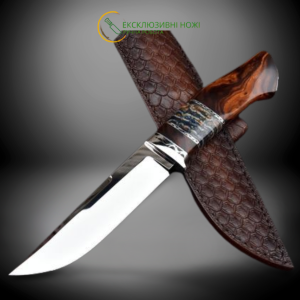

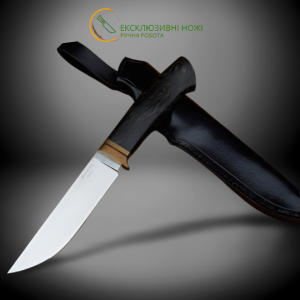
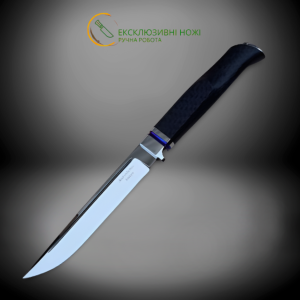

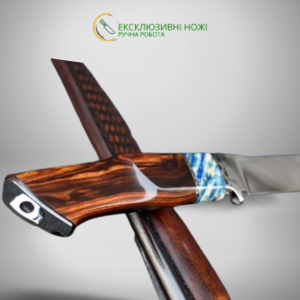
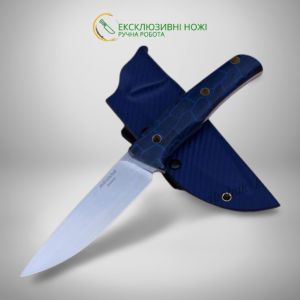
/EXELSIOR S90V ніж ручної роботи майстра студії Androshchuk Knives, купити замовити в Україні-300x300.png)
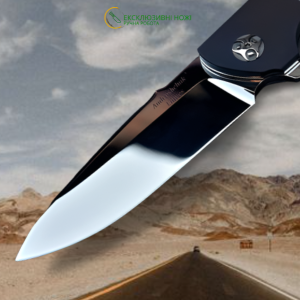
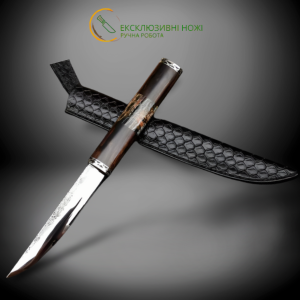
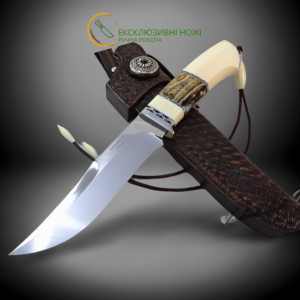
/JUNIOR BEAR (ЮНИЙ ВЕДМІД) ніж ручної роботи майстра студії ANDROSHCHUK KNIVES, купити замовити в Україні_зас-300x300.png)
-300x300.png)






























14-300x300.png)









17-300x300.jpg)
/НЕВИДИМИЙ II (чорний) ексклюзивний ніж ручної роботи майстра студії Fomenko Knifes, купити замовити в Україні16-300x300.jpg)




-300x300.jpg)


2 2-300x300.jpg)

/БОЦМАН (BOTSMAN) ексклюзивний ніж ніж ручної роботи майстра студії СЕРГІЯ ДРОЗДА, купити замовити в Україні (Сталь - CPM S110V) 2-300x300.jpg)
-300x300.png)
-300x300.png)
 -300x300.png)
 копія (1)-300x300.jpg)
 — середнє 2-300x300.jpg)
_заст-300x300.png)







 — середнє 2-300x300.jpg)














































, купити замовити в Україні_заст2 — середнє-300x300.jpg)
, купити замовити в Україні_заст-300x300.png)
, купити замовити в Україні_заст-300x300.png)
, купити замовити в Україні_заст-300x300.png)









, купити замовити в Україні-300x300.png)
, купити замовити в Україні_заст-300x300.png)

































































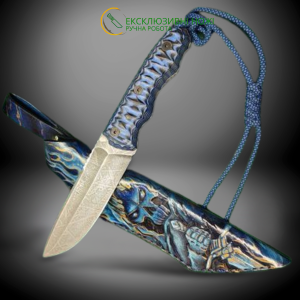
-300x300.png)



, купити замовити в Україні-300x300.png)
, купити замовити в Україні — середнє-300x300.png)


/АВІАТОР/АВІАТОР ексклюзивний колекційний ніж ручної роботи студії KUSTOM KNIVES купити замовити в Україні -300x300.png)
/ДЕЛЬФІН/ДЕЛЬФІН (Dolphin) ексклюзивний колекційний складний ніж ручної роботи студії KUSTOM KNIVES_застав2-300x300.png)
/МІНОС (Minos)/MINOS (МІНОС) ексклюзивний колекційний складний ніж ручної роботи студії KUSTOM KNIVES_заст-300x300.png)
/ВОЯДЖЕР (Voyager)/ВОЯДЖЕР (Voyager) ексклюзивний колекційний складний ніж ручної роботи студії KUSTOM KNIVES29_заст-300x300.png)
/IRONBELLY/IRONBELLY ексклюзивний колекційний складний ніж ручної роботи студії KUSTOM KNIVES — середнє 2-300x300.jpg)
/ОЛВАР (Olvar)/ОЛВАР (Olvar) ексклюзивний колекційний складний ніж ручної роботи студії KUSTOM KNIVES купити замовити в Україні_заст-300x300.png)
/НОВА ГОТИКА/НОВА ГОТИКА ексклюзивний колекційний ніж ручної роботи студії KUSTOM KNIVES купити замовити в Україні_заст-300x300.png)


/ЗОЛОТА ОСІНЬ/ЗОЛОТА ОСІНЬ ексклюзивний колекційний ніж ручної роботи студії KUSTOM KNIVES_заставка-300x300.png)
/ВЕСНА/ВЕСНА ексклюзивний колекційний ніж ручної роботи студії KUSTOM KNIVES купити замовити в Україні_заст-300x300.png)





























/GOLD NORD/GOLD NORD ексклюзивний колекційний ніж ручної роботи студії KUSTOM KNIVES купити замовити в Україні-300x300.png)

-300x300.png)

/PLUS+/PLUS ексклюзивний колекційний ніж ручної роботи студії KUSTOM KNIVES-300x300.png)












































/СЛІМ (Slim)/СЛІМ (Slim) скаладний ніж ручної роботи студії KUSTOM KNIVES, Сталь - Damasteel® RWL-34™ 61-62 HRC_заст — середнє-300x300.jpg)



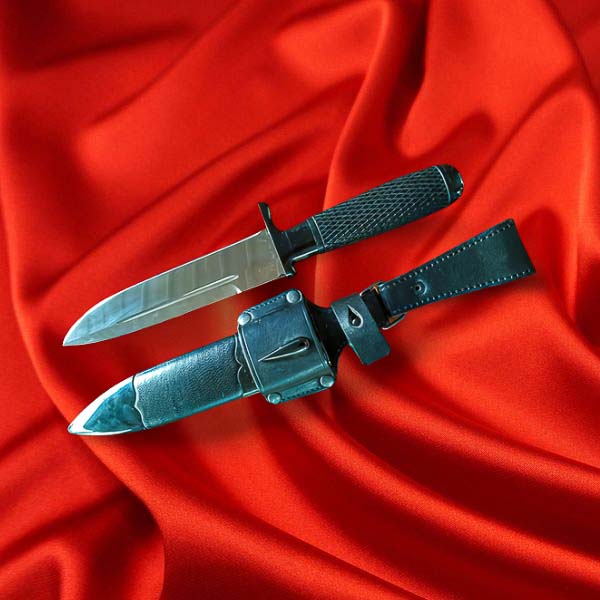
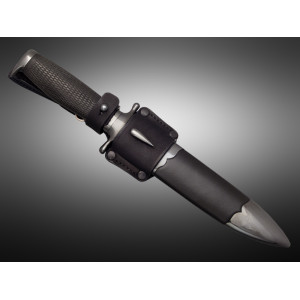

-600x600.png)
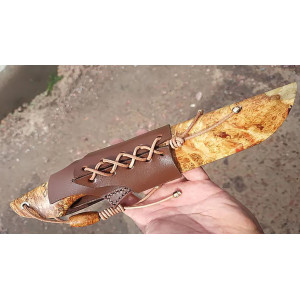
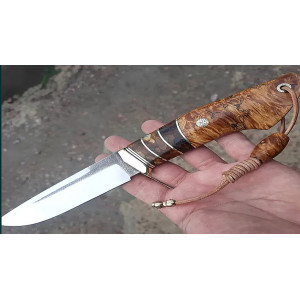






_заст-600x600.png)
9-300x300.jpg)
6-300x300.jpg)


























